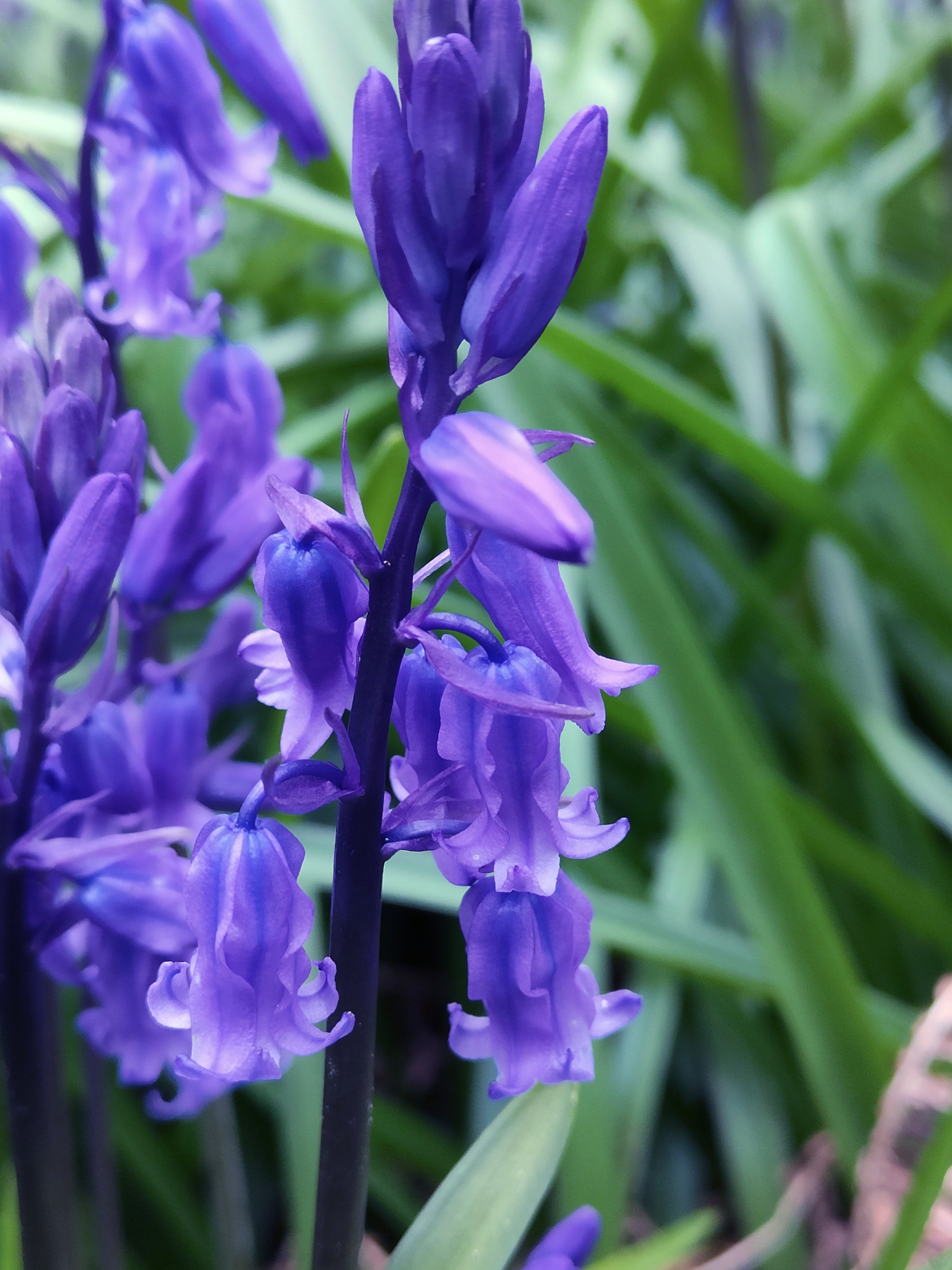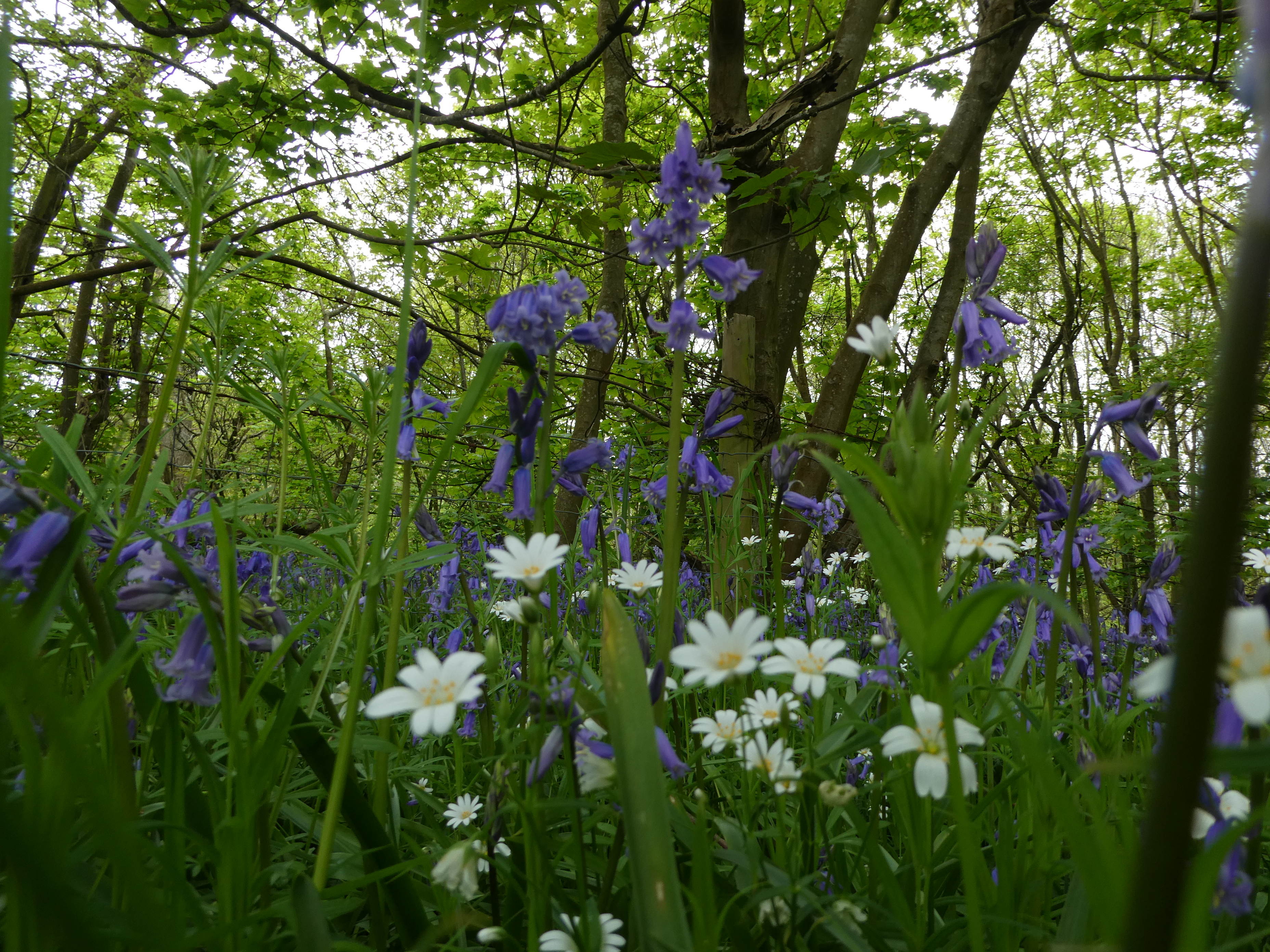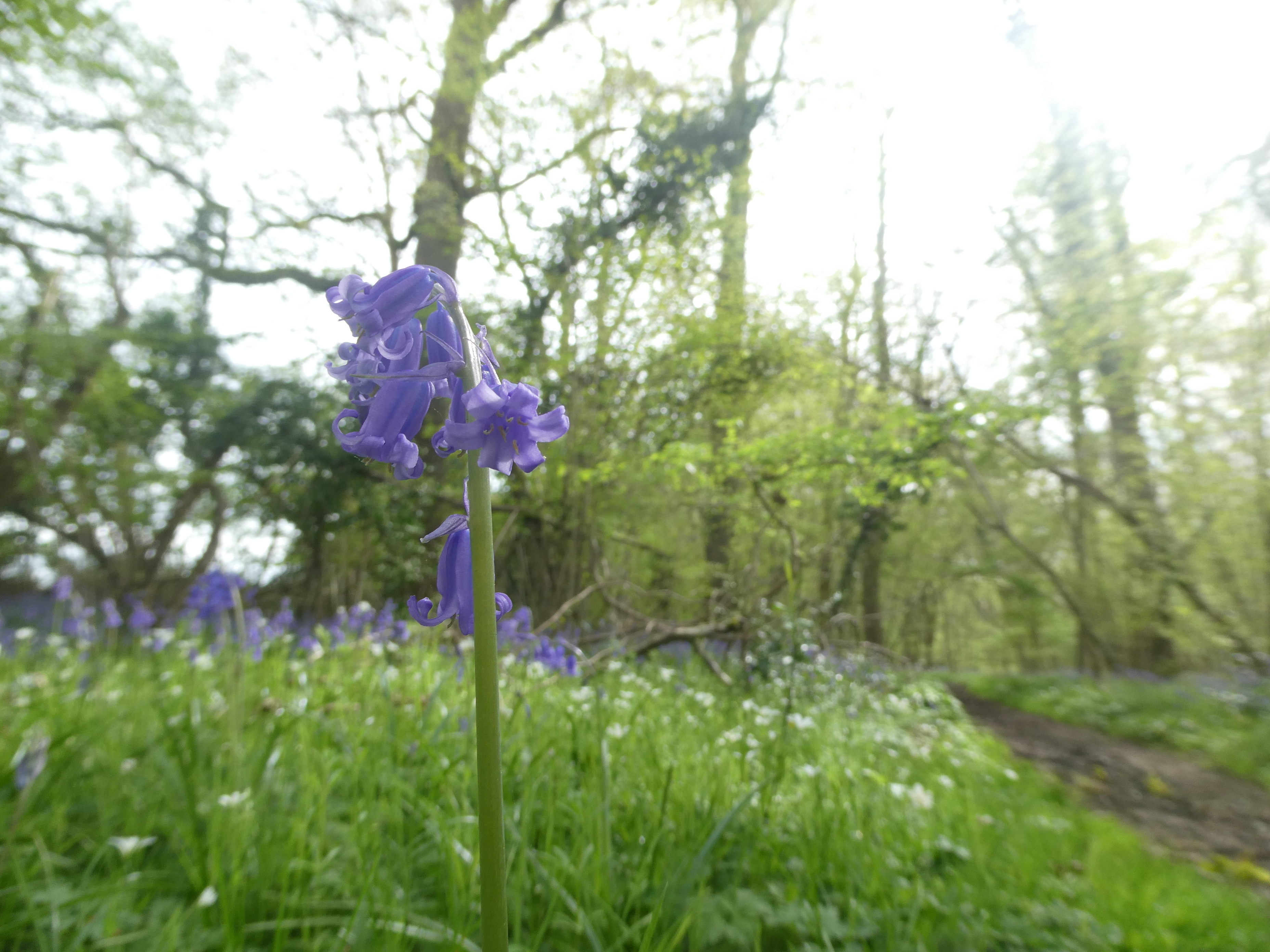
12 Apr 2025
It's getting round to bluebell time again - the first few are showing in the woods - so here are a few relevant snippets to enhance the blue experience. English bluebells (Hyacinthoides non-scripta) are native to Western Europe, especially the UK, where about half of the world's bluebells can be found. They bloom in ancient woodlands, meadows, and shaded areas, turning the forest floor into a sea of violet-blue in spring (April to May).

In the UK, it’s illegal to intentionally pick, uproot, or destroy wild bluebells, and landowners can be prosecuted for removing bluebells for sale under the Wildlife and Countryside Act 1981.
English bluebells have a sweet, honey-like fragrance that attracts bees and other pollinators. Their drooping, tubular shape is perfect for long-tongued pollinators like bees and hoverflies. The bluebells in Besselsleigh Woods form a dense carpet, indicating it is an ancient woodland — it has existed continuously since at least 1600 AD
Distinguishing them from Spanish Bluebells
English bluebells:
- Deep violet-blue (sometimes white or pink, but rarely).
- Flowers hang mostly on one side of the stalk.
- Narrow, slightly curled petals at the tips.
- Strong scent.

Folklore and Legends
In old British folklore, bluebells were called "fairy flowers." It was believed that fairies used them to summon their gatherings, and if you heard a bluebell ring, misfortune would follow! Walking through bluebell woods was said to be risky, as you might be enchanted by the fairies. Historically, their sticky sap was used for bookbinding and even as glue for feather fletching on arrows.


